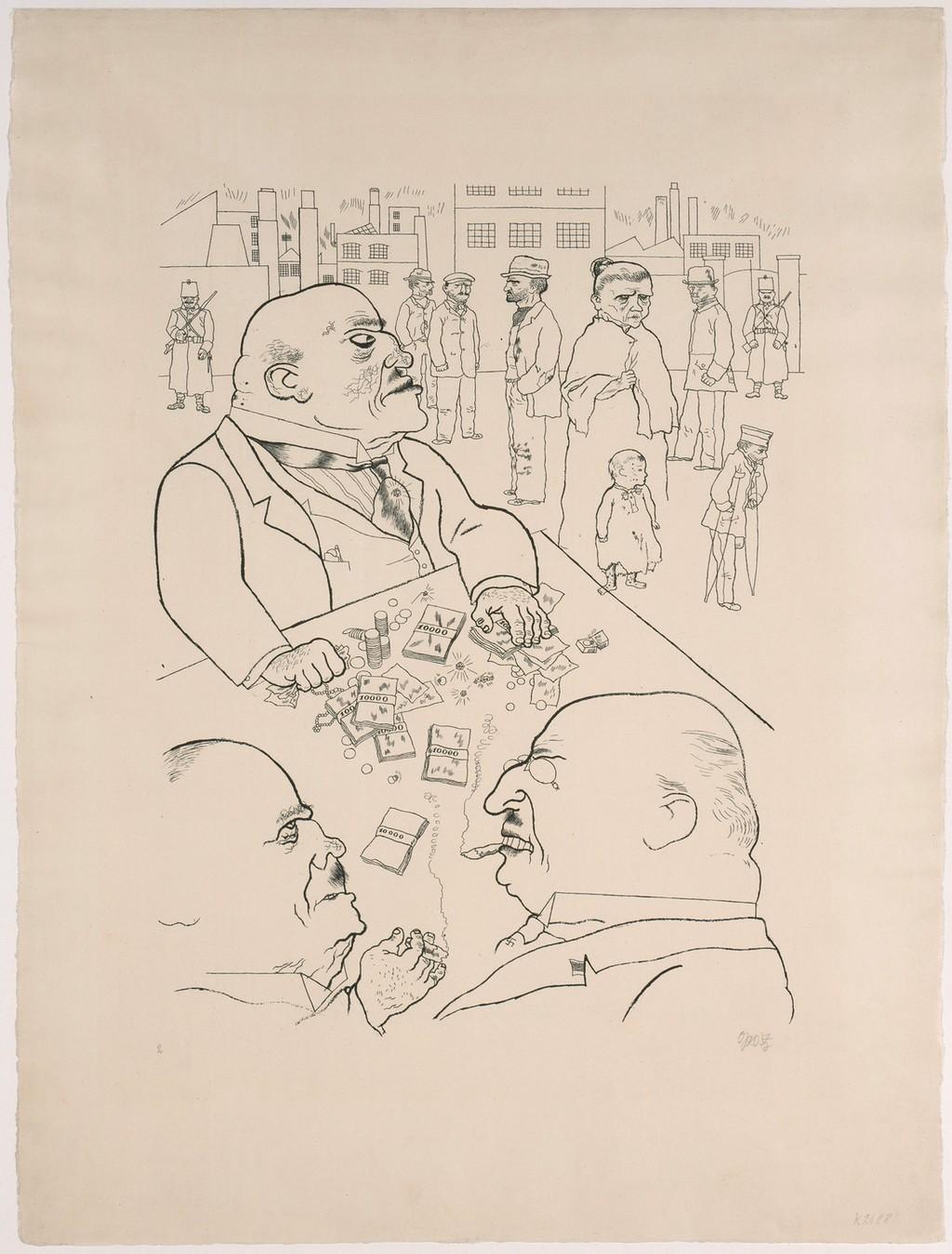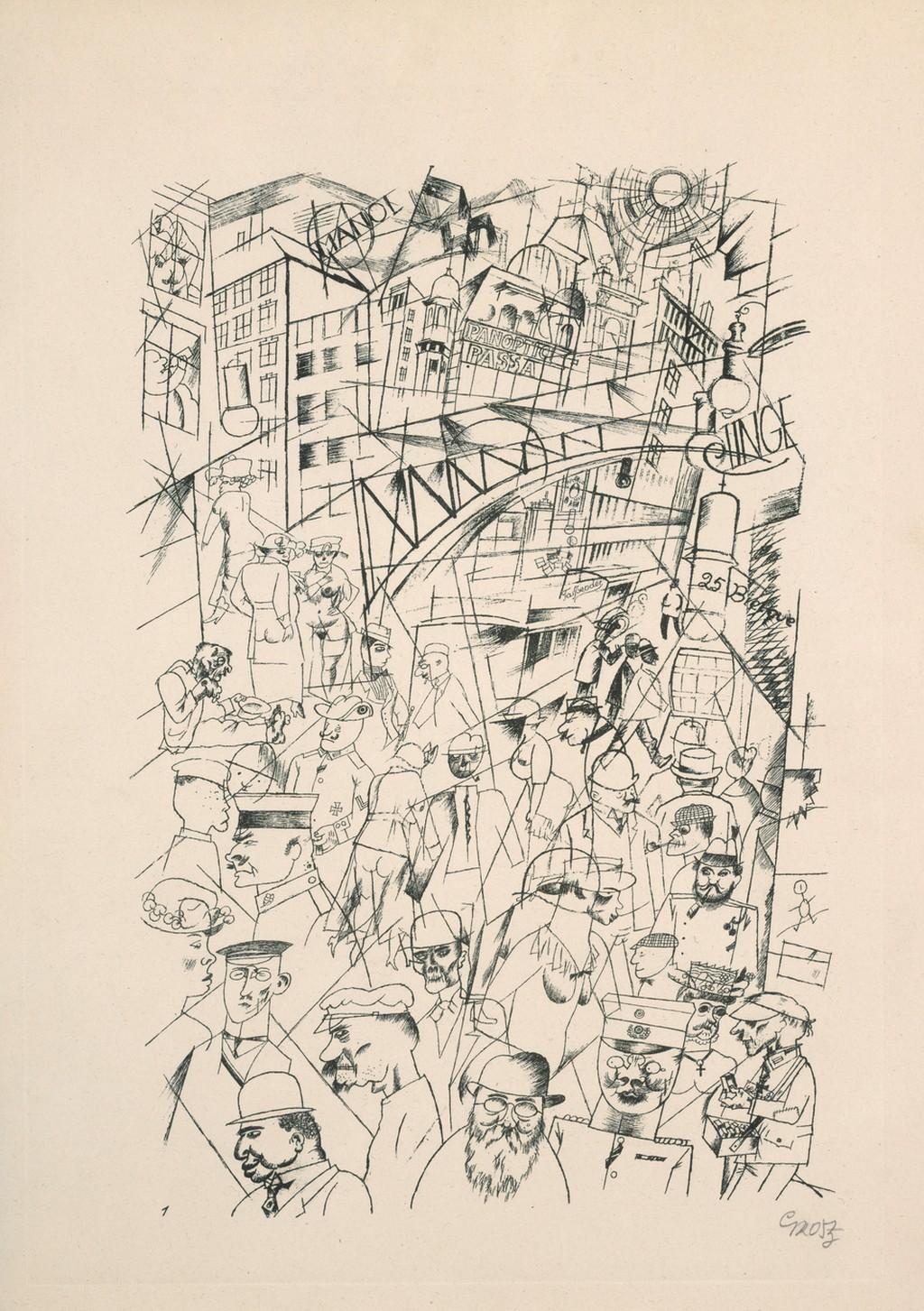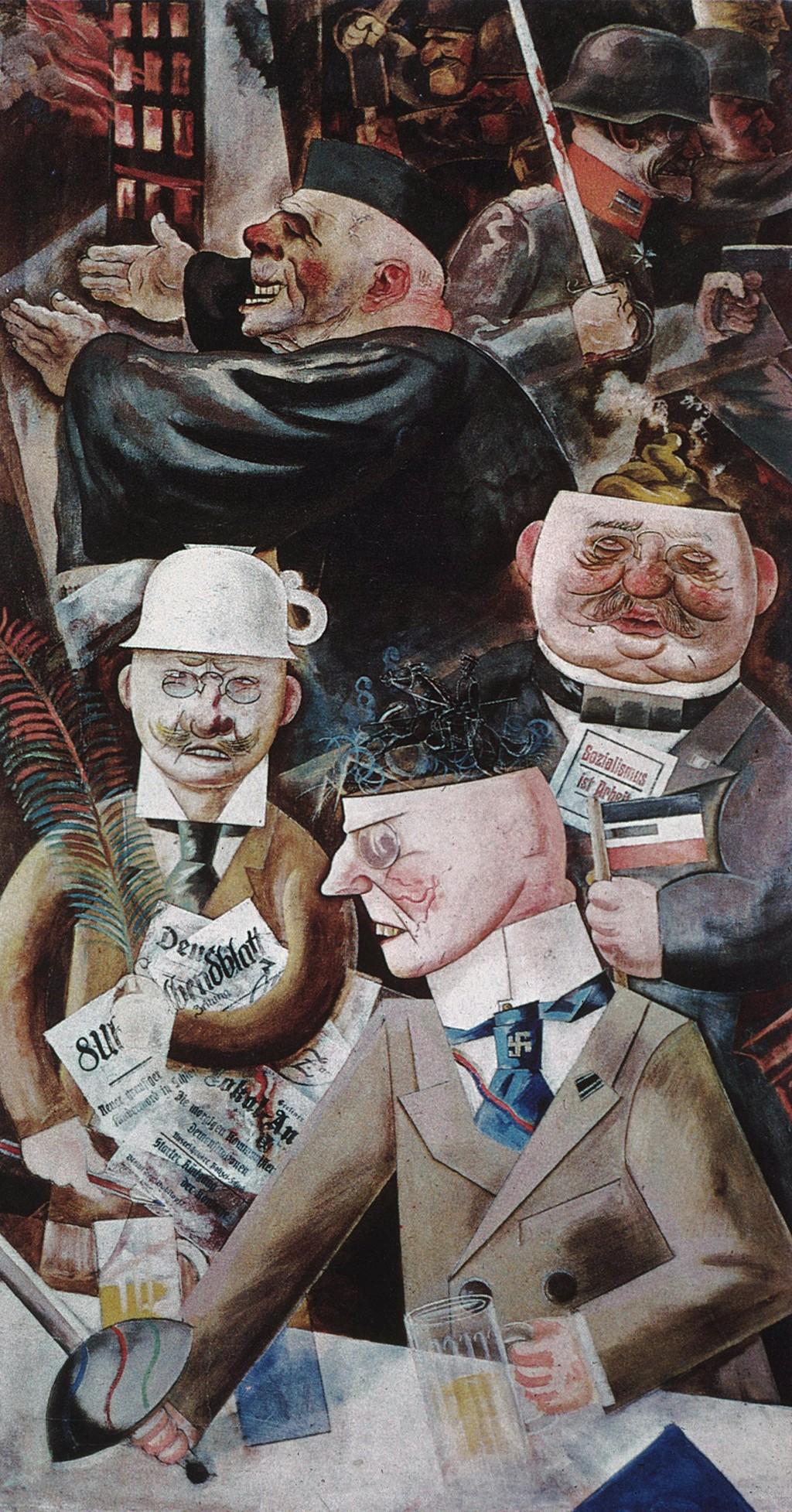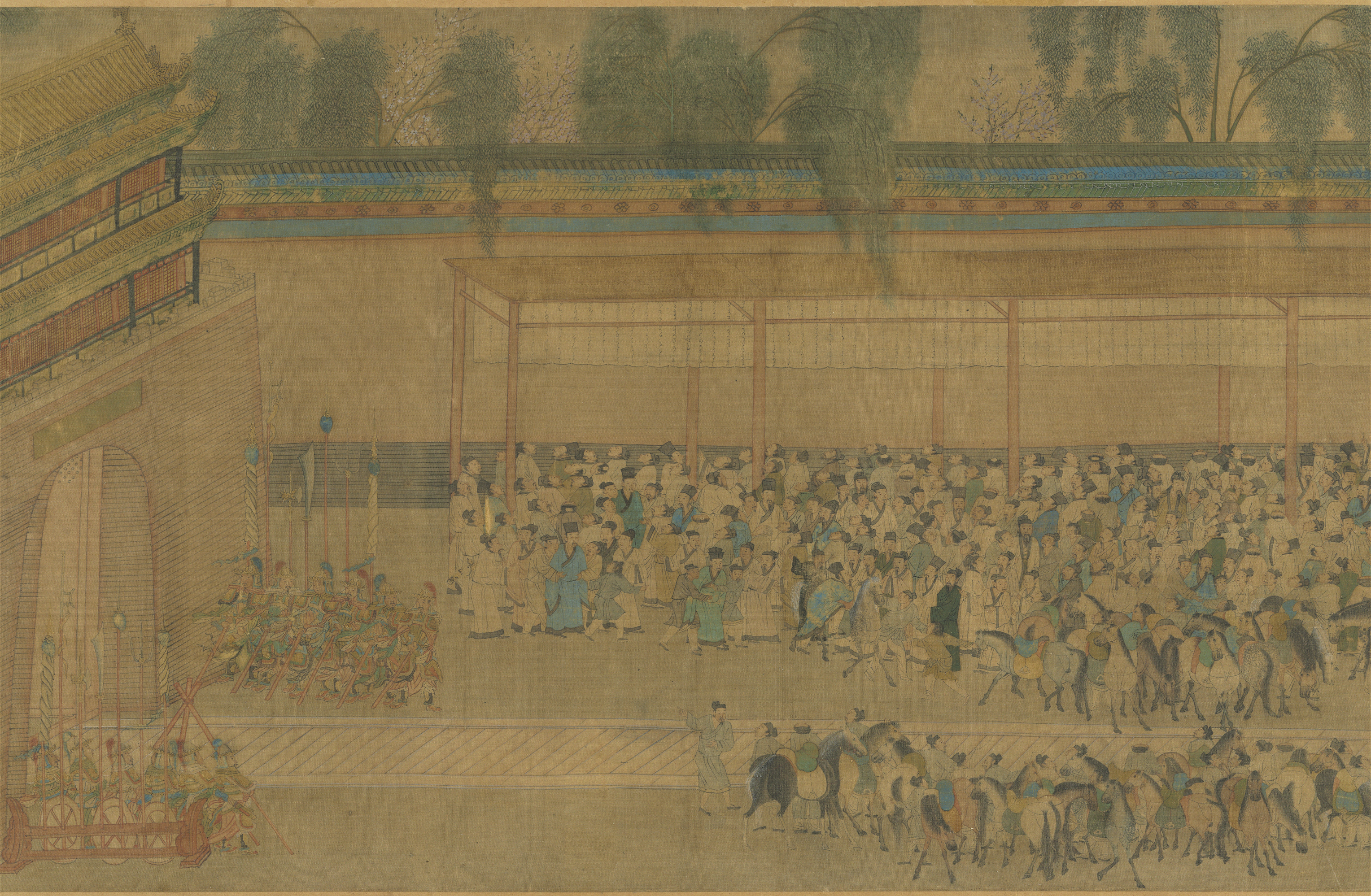Statistics of Inequality and Discrimination
36-313, Fall 2021
 Cosma Shalizi
Cosma Shalizi
Tuesdays and Thursdays, 1:25 -- 2:45 pm, Gates-Hillman Complex (GHC) 4101 Wean Hall (WEH) 6403
Many social questions about inequality, injustice and unfairness are, in part, questions about evidence, data, and statistics. This class lays out the statistical methods which let us answer questions like Does this employer discriminate against members of that group?, Is this standardized test biased against that group?, Is this decision-making algorithm biased, and what does that even mean? and Did this policy which was supposed to reduce this inequality actually help? We will also look at inequality within groups, and at different ideas about how to explain inequalities between and within groups. The class will interweave discussion of concrete social issues with the relevant statistical concepts.
Pre-requisites
36-202 ("Methods for Statistics and Data Science") (and so also 36-200, "Reasoning with Data")
Learning Objectives (accreditation bureaucrats look here)
By the end of the course, students will be be able to calculate, adjust, and
communicate standard statistical measures of inequality within and between
groups, and discuss their relation to social concepts of discrimination
and disparity. More specifically, students will learn to
- Calculate standard measures of within-group inequality, such as the Gini index, apply them to data sets, and interpret the results
- Recognize, describe and estimate heavy-tailed distributions of income, wealth, etc., and articulate how heavy tails relate to levels of inequality
- Calculate standard measures of between-group inequality, apply them to data sets, calculate the statistical significance and uncertainty of these measures,
and interpret the results
- Adjust measures of between-group inequality for differences in the characteristics of various groups (using regression or other, related techniques), and explain the pros and cons of doing so
- Relate statistical measures of between-group inequality to legal concepts of "disparate treatment", "disparate impact" and discrimination
- Calculate standard measures of intergenerational mobility, and explain their implications for the persistence of inequality
- Calculate and interpret standard measures of spatial segregation;
- Calculate, distinguish and apply widely-used concepts of "fairness" and "bias" for decision-making algorithms and for mental tests;
- Assess studies of social programs against commonly-accepted standards of experimental and observational study design
- Understand models of social dynamics in which categorical inequalities form and/or perpetuate themselves, even in the absence of prejudice, and distinguish situations where these models do apply from those where they do not
Course Mechanics
Lectures will be used to amplify the readings, provide examples and demos, and
answer questions and generally discuss the material. You will usually find the
readings more rewarding if you do the readings before lecture, rather
than after (or during).
No Recordings: I will not be recording lectures.
This is because the value of class meetings lies precisely in your chance to
ask questions, discuss, and generally interact. (Otherwise, you could just
read a book.) Recordings interfere with this in two ways:
- They tempt you to skip class and/or to zone out and/or try to multi-task
during it. (Nobody, not even you, is really any good at
multi-tasking.) Even if you do watch the recording later, you will
not learn as much from it as if you had attended in the first place.
- People are understandably reluctant to participate when they know they're
being recorded. (It's only too easy to manipulate recordings to make anyone
seem dumb and/or obnoxious.) Maybe this doesn't bother you; it doesn't bother
me, much, because I'm protected by academic freedom and by tenure, but a good
proportion of your classmates won't participate if they're being recorded,
and that diminishes the value of the class for everyone.
Recording someone without their permission is illegal in many places, and
more importantly is unethical everywhere, so don't make your own recordings
of the class.
(Taking notes during class is fine and I strongly encourage it; taking notes
forces you to think about what you are hearing and how to organize it, which
vhelps you understand and remember the content.)
There is, unfortunately, no one textbook which covers the material we'll go
over at the required level. You will, instead, get very detailed lecture notes
after each lecture. There will also be a lot of readings from various books
and articles. (I will not agree with every reading I assign.)
You will see, when you look at the class schedule below, that there are
usually no more than two (shorter) readings per class. There are also however
a lot of optional readings. I don't expect you to do all those readings, but
they do give you pathways to go deeper into particular subjects, to explore the
history of ideas about some matter, or point you at related topics. You may
notice that lots of the readings aren't about statistics; this is because
doing good statistics about any subject requires knowing lots about
the subject-matter.
There are three reasons you will get assignments in this course. In order of
decreasing importance:
- Practice. Practice is essential to developing the skills you are
learning in this class. It also actually helps you learn, because some things
which seem murky clarify when you actually do them, and sometimes trying to do
something shows you what you only thought you understood.
- Feedback. By seeing what you can and cannot do, and what comes
easily and what you struggle with, I can help you learn better, by giving
advice and, if need be, adjusting the course.
- Evaluation. The university is, in the end, going to stake its
reputation (and that of its faculty) on assuring the world that you have
mastered the skills and learned the material that goes with your degree.
Before doing that, it requires an assessment of how well you have, in fact,
mastered the material and skills being taught in this course.
To serve these goals, there will be two kinds of assignment in this
course.
- After-class comprehension questions and exercises
- Following every lecture, there will be a brief set of questions
about the material covered in lecture. Sometimes these will be about specific
points in the lecture, sometimes about specific aspects of the reading assigned
to go with the lecture. These will be done on Canvas/Gradescope, and will be
due the day after each lecture. These should take no more than 10 minutes, but
will be untimed (so no accommodations for extra time are necessary). If the
questions ask you to do any math (and not all of them will!), a scan or
photograph of hand-written math is OK, so long as the picture is clearly
legible. (Black ink or dark pencil on white paper helps.)
- Homework
- Most weeks will have a homework assignment, divided into a series of
questions or problems. These will have a common theme, and will usually build
on each other. Each problem set will involve
some combination of (very basic) statistical theory, (possibly less basic)
calculations using the theory we've gone over, and analysis of real data sets
using the methods discussed in class.
- All homework will be submitted electronically through Gradescope/Canvas.
Most weeks, homework will be due at 6:00 pm on Thursdays
(Pittsburgh time). There will be a few weeks, clearly noted on the syllabus
and on the assignments, when this won't be the case. When this results in less
than seven days between an assignment's due date and the previous due date, the
homework will be shortened.
You should expect to spend 5--7 hours on assignments every week, averaging over
the semester. (This follows from the university's rules about how course
credits translate into hours of student time.) If you find yourself spending
significantly more time than that on the class, please come to talk to me.
Grades will be broken down as follows:
- Homework: 90%. All homeworks will have equal weight. Your lowest 3
homework grades will be dropped, no questions asked. If you turn in all
homework assignments on time, for a grade of at least 60% (each), your
lowest four homework grades will be dropped.
Accordingly: Late homework will not be accepted for any
reason.
- After-class questions: 10%. All sets of questions will
have equal weight. The lowest 5 will be dropped, no questions asked, with
the lowest 6 dropped if you turn in every set of questions with a minimum
grade of 60%.
Grade boundaries will be as follows:
| A | [90, 100] |
| B | [80, 90) |
| C | [70, 80) |
| D | [60, 70) |
| R | < 60 |
To be fair to everyone, these boundaries will be held to strictly.
Grade changes and regrading: If you think that particular
assignment was wrongly graded, tell me as soon as possible. Direct any
questions or complaints about your grades to me; the teaching assistants have
no authority to make changes. (This also goes for your final letter grade.)
Complaints that the thresholds for letter grades are unfair, that you deserve a
higher grade, that you need a higher grade, etc., will accomplish much less
than pointing to concrete problems in the grading of specific assignments.
As a final word of advice about grading, "what is the least amount of work I
need to do in order to get the grade I want?" is a much worse way to approach
higher education than "how can I learn the most from this class and from my
teachers?".
Homework will be submitted electronically through Gradescope/Canvas. Canvas
will also be used for the after-class questions, as a calendar showing all
assignments and their due-dates, to distribute some readings, and as the
official gradebook.
We will be using Piazza for question-answering. You will receive an
invitation within the first week of class. Anonymous-to-other-students posting
of questions and replies will be allowed, at least initially. Anonymity will
go away for everyone if it is abused. During Piazza office hours, someone will
be online to respond to questions (and follow-ups) in real time. You are
welcome to post at any time, but outside of normal working hours you should
expect that the instructors have lives.
| Wednesday | 1:00--3:00 | Prof. Shalizi | Piazza |
During Piazza office hours, I'll be checking the site continually, and responding ASAP, so you can get very quick feedback, and there's a record which you (and others in the class) can consult later.
Except for explicit group exercises,
everything you turn in for a grade must be your own work, or a clearly
acknowledged borrowing from an approved source; this includes all mathematical
derivations, computer code and output, figures, and text. Any use of permitted
sources must be clearly acknowledged in your work, with citations letting the
reader verify your source. You are free to consult the textbooks and
recommended class texts, lecture slides and demos, any resources provided
through the class website, solutions provided to this semester's
previous assignments in this course, books and papers in the library, or
legitimate online resources, though again, all use of these sources must be
acknowledged in your work. (Websites which compile course materials
are not legitimate online resources.)
In general, you are free to discuss homework with other students in the
class, though not to share or compare work; such conversations must be
acknowledged in your assignments. You may not discuss the content of
assignments with anyone other than current students, the instructors, or your
teachers in other current classes at CMU, until after the assignments are due.
(Exceptions can be made, with prior permission, for approved tutors.) You are,
naturally, free to complain, in general terms, about any aspect of the course,
to whomever you like.
Any use of solutions provided for any assignment in this course, or in other
courses, in previous semesters is strictly prohibited. This prohibition
applies even to students who are re-taking the course. Do not copy the old
solutions (in whole or in part), do not "consult" them, do not read them, do
not ask your friend who took the course last year if they "happen to remember"
or "can give you a hint". Doing any of these things, or anything like these
things, is cheating, it is easily detected cheating, and those who thought they
could get away with it in the past have failed the course. Even more
importantly: doing any of those things means that the
assignment doesn't give you a chance to practice; it makes any
feedback you get meaningless; and of course it makes any evaluation based on
that assignment unfair.
If you are unsure about what is or is not appropriate, please ask me before
submitting anything; there will never be a penalty for asking. If you do
violate these policies but then think better of it, it is your responsibility
to tell me as soon as possible to discuss how to rectify matters. Otherwise,
violations of any sort will lead to severe, formal disciplinary action, under
the terms of the university's
policy
on academic integrity.
On the first day of class, you will be assigned a "homework 0" on the
content of these policies. This assignment will not factor into your grade,
but you must complete it before you can get any credit for any other
assignment.
If you need accommodations for physical and/or learning disabilities, please
contact the Office of Disability Resources, via their
website, www.cmu.edu/disability-resources.
They will help you work out an official written accommodation plan, and help
coordinate with me.

The university is a community of scholars, that is, of people seeking
knowledge. All of our accumulated knowledge has to be re-learned by every new
generation of scholars, and re-tested, which requires debate and discussion.
Everyone enrolled in the course has a right to participate in the class
discussions. This doesn't mean that everything everyone says is equally
correct or equally important, but does mean that everyone needs to be treated
with respect as persons, and criticism and debate should be directed
at ideas and not at people. Don't dismiss (or credit) anyone in the
course because of where they come from, and don't use your participation in the
class as a way of shutting up others. Don't be rude, and don't go looking for
things to be offended by. Statistical methods don't usually lead to
heated debate, but the subjects to which we'll apply the methods notoriously
do. If someone else is saying something you think is really wrong-headed, and
you think it's important to correct it, address why it doesn't make sense, and
listen if they give a counter-argument.
The classroom is not a democracy; as the teacher, I have the right and the
responsibility to guide the discussion in what I judge are productive
directions. This may include shutting down discussions which are not helping
us learn about statistics, even if those discussions might be important to have
elsewhere. (You can have them elsewhere.) I will do my best to guide the
course in a way which respects everyone's dignity as a human being, as a
scholar, and as a member of the university.
Detailed course calendar
Links to lecture notes, assignments, etc., will go here as they become
relevant.
Readings will be finalized a week before each course meeting. Links on
readings point to electronic versions accessible through the university
library. (You may need to authenticate yourself with the library and/or use
the VPN, if you're trying to access them from off campus.) Optional readings
really are optional, but the non-optional ones really are not optional.
Readings marked with one or more stars (*) are, as it were, especially
optional, because of some combination of being long, difficult, old, etc.
The order of topics after about October 15 is currently somewhat
tentative. The due dates for assignments, however, are fixed.
Lecture 1 (Tuesday, 31 August):
Introduction to the course
- Overview of course topics, goals and mechanics. Lighting review of
essential probability and statistics: populations, distribution within a
population, distribution functions, models for distributions, comparison of
distributions across populations or sub-populations, samples and inference from
samples.
- Notes for lecture 1 (.Rmd file, showing how to do all the calculations and make all the figures using R Markdown)
- Homework:

Lecture 2 (Thursday, 2 September):
Describing income and wealth inequality within a single population
- What does the distribution of income and wealth look like within a
population? How do we describe population distributions, especially when there
is an extreme range of values (a big difference between the rich and poor)?
Measures of central tendency (median, mode, mean), of dispersion and of skew.
Trends over time in median vs. mean income and wealth. Where do you fall in
the distribution if you make $10,000 a year, or $50,000, or $1,000,000? How
much do you need to make to be better off than 50% of the population? Than
90%? Than 99%? Where did the idea of "the 1%" wealthy elite come from?
Trends over time in typical values vs. high percentiles. Measures
of concentration of income and wealth: ratios, the Lorenz curve, the
Gini coefficient. Time permitting: other summary measures of concentration and
inequality besides the Gini coefficient.
- Notes (.Rmd)
- Readings:
Lecture 3 (Tuesday, 7 September):
Income and wealth inequality: modeling I
- The concept of "heavy tails", where the largest values in a population are
orders of magnitude larger than typical values. Specific kinds of
distributions adapted to heavy-tailed data; log-normal and power law (Pareto,
Zipf) distributions. Calculating measures of inequality from theoretical
distributions.
- Notes (.Rmd)
- Reading
- Mark E. J. Newman, "Power laws, Pareto distributions and Zipf's law", Contemporary Physics 46 (2005): 323--351, arxiv:cond-mat/0412004, sections I, II, III (skipping or skimming sub-section F), IV (skipping or skimming sub-sections E and F)
- Optional reading
- (*) Barry C. Arnold, Pareto Distributions, 2nd edition (Boca Raton, Florida: CRC Press, 2015)
- (**) Vladimir Hlasny, "Parametric representation of the top of income distributions: Options, historical evidence, and model selection",
Journal of Economic Surveys 35 (2021): 1217--1256
Lecture 4 (Thursday, 9 September):
Modeling wealth and income distributions II
- Fitting distributions to data, using summary statistics and/or maximum
likelihood. Checking goodness of fit. Explanations and origin myths: positive
feedback, multiplicative growth and "cumulative advantage" processes.
- Reading:
- Continue reading Newman (2003)
- Optional reading:
- (*) Aaron Clauset, Cosma Rohilla Shalizi and M. E. J. Newman, "Power-law Distributions in Empirical Data", SIAM Review 51 (2009): 661--703, arxiv:0706.1062
- (*) Michael Mitzenmacher, "A brief history of generative models for power law and
lognormal distributions", Internet Mathematics 1 (2004): 226--251
- (***) Elliott W. Montroll and Michael F. Shlesinger, "On 1/f noise and other distributions with long tails", Proceedings of the National Academy of Sciences (USA) 79 (1982): 3380--3383
- (***) Herbert A. Simon, "On a Class of Skew Distribution Functions", Biometrika 42 (1955): 425--440
- (**) John Sutton, "Gibrat's Legacy", Journal of Economic Literature 35 (1997): 40--59 [ungated copy]
- Homework:

Lecture 5 (Tuesday, 14 September):
Speed-run through social and economic stratification
- Reminders (?) about social-scientific concepts used to describe differences
between people, and how people describe others and themselves. Types of
qualitative, categorical differences: class, order, caste, race, ethnicity,
nationality, citizenship, sex, gender. More-or-less dimensions of
differentiation: age, status, prestige, income, consumption, wealth, other
resources --- "human capital" or skills, "cultural capital", "social capital".
The compound measure "socioeconomic status". Education. The distinction
between "ascribed" and "attained" social conditions. The legal notion of
"protected categories". Individual and inter-generational mobility;
transmission of inequality. Endogamy and informative, but uninfluential,
genetic differences.
- Readings
- Lisa A. Keister and Darby E. Southgate, "Social stratification and opportunities", ch. 1 in Inequality: A Contemporary Approach to Race, Class, and Gender (Cambridge, England: Cambridge University Press, 2012)
- Optional reading
- Kwame Anthony Appiah, The Lies That Bind: Rethinking Identity (New York: W. W. Norton, 2018)
- (*) Kwame Anthony Appiah, Lines of Descent: W. E. B. Du Bois and the Emergence of Identity (Cambridge, Massachusetts: Harvard University Press, 2014)
- Luigi L. Cavalli-Sforza, Genes, Peoples, and Languages (New York: North Point Press, 2000)
- (*) Luigi L. Cavalli-Sforza, Paolo Menozzi and Alberto Piazza, "Demic Expansions and Human Evolution", Science 259 (1993): 639--646
- (*) John Dollard, Caste and Class in a Southern Town (3rd edition Garden City, New York: Doubleday Anchor, 1957; first edition New Haven, Connecticut: Yale University Press, 1937), especially ch. V ("Caste and Class in Southertown")
- Ernest Gellner, Nations and Nationalism (Ithaca, New York: Cornell University Press, 1983)
- Alondra Nelson, The Social Life of DNA: Race, Reparations, and Reconciliation After the Genome (Boston: Beacon Press, 2016)
- (*) W. G. Runciman, The Social Animal (London: HarperCollins, 1998)
- (*) Charles Tilly, Durable Inequality (Berkeley: University of California Press, 1998)
- (*) Adam P. Van Arsdale, "Population Demography, Ancestry, and the Biological Concept of Race", Annual Review of Anthropology 48 (2019): 227--241
- (*) W. Lloyd Warner, "American Caste and Class", American Journal of Sociology 42 (1936): 234--237
Lecture 6 (Thursday, 16 September):
Income (and wealth) disparities: comparing central tendencies and typical values
- How does income (and wealth) differ across groups? How do we compare average or typical values? Permutation tests for differences in mean (and other
measures of the average). Resampling (the bootstrap) for finding the range of differences compatible with the data, and/or margins of error around an estimate of the difference.
- Notes (.Rmd file, containing code you may find useful in the homework)
- Reading:
- Andrew S. Zieffler, Jeffrey R. Harring, and Jeffrey D. Long, Comparing Groups: Randomization and Bootstrap Methods Using R (New York; John Wiley and Sons, 2011), chs. 6 ("Randomization and Permutation Tests"), 7 ("Bootstrap Tests") and 9 ("Bootstrap Intervals and Effect Sizes"). Of these, chs. 6 and 9 are most important, and you can skim or even skip sections 6.8, 7.4--7.7, 7.12--7.13, 9.5--9.6, 9.8--9.10
- Optional readings:
- (**) A. C. Davison and D. V. Hinkley, Bootstrap Methods and their Applications (Cambridge, England: Cambridge University Press, 1997)
- (**) Bradley Efron, "Bootstrap Methods: Another Look at the Jackknife", Annals of Statistics 7 (1979): 1--26
- (*) Tim Hesterberg, "What Teachers Should Know about the Bootstrap: Resampling in the Undergraduate Statistics Curriculum", arxiv:1411.5279 (2014)
- (*) CRS, Advanced Data Analysis from an Elementary Point of View, ch. 6
- CRS, "The Bootstrap", American Scientist 98 (2010): 186--190
- Homework:
- Homework 2 due
- Homework 3: assignment; the data file and descriptive "codebook" are on Canvas, and shouldn't be shared outside this class.

Lecture 7 (Tuesday, 21 September)
Income (and wealth) disparities: comparing whole distributions
- The "analysis of variance" method: decomposing the over-all variance into
variance within groups versus variance between groups. Some ANOVA models,
i.e., linear regressions with only categorical predictor variables.
Fitting ANOVA models. Trends in global income inequality, between-country and within-country inequality. Q-Q plots for comparing distributions. Stochastic dominance. The "relative
distribution" method of comparing populations.
- Notes (.Rmd)
- Readings:
- Mark S. Handcock and Martina Morris, "Relative Distribution Methods", Sociological Methodology 28 (1998): 53--97
- Optional readings:
- (**) Patrick Bayer and Kerwin Kofi Charles, "Divergent Paths: Structural Change, Economic Rank, and the Evolution of Black-White Earnings Differences, 1940--2014", Working Paper 22797, National Bureau of Economic Research (2016)
- (*) Mark S. Handcock and Martina Morris, Relative Distribution Methods in the Social Sciences (New York: Springer-Verlag, 1999)
- (**) R. A. Fisher, Statistical Methods for Research Workers (Edinburg: Oliver and Boyd, 1925), chs. 7 and 8
- (***) R. A. Fisher, "The Correlation Between Relatives on the Supposition of Mendelian Inheritance", Transactions of the Royal Society of Edinburgh 52 (1918): 399--433 [Available via the R. A. Fisher Digital Archive]
- Branko Milanovic, Global Inequality: A New Approach for the Age of Globalization (Cambridge, Massachusetts: Harvard University Press, 2016)
Lecture 8 (Thursday, 23 September)
No class meeting due to instructor illness

Lecture 9 (Tuesday, 28 September):
Explaining, or explaining away, inequality I
- To what extent can differences in outcomes between groups be explained by
differences in their attributes (e.g., explaining differences in incomes by
differences in marketable skills)? How should we go about making such
adjustments? Is it appropriate to treat discrimination as the "residual" left
unexplained? Using regression models to "control for" or "adjust for" multiple
variables when comparing mean outcomes. (Time permitting: equivalent
adjustments in relative-distribution comparisons.)
- Notes (.Rmd)
- Readings:
- Optional:
- (*) Philipp Bach, Victor Chernozhukov, Martin Spindler, "Closing the U.S. gender wage gap requires understanding its heterogeneity", arxiv:1812.04345
- Walter Benn Michaels and Adolph Reed, Jr., "The Trouble with Disparity", Nonsite 32 (10 September 2020)
- (*) Jacob Mincer, Schooling, Experience and Earnings (New York: Columbia University Press, 1974)
Lecture 10 (Thursday, 30 September):
Explaining, or explaining away, inequality II
- Deciding
what to adjust for.
explanation, and when is it "explaining away" discrimination? Using graphical
models to represent causal relations between variables. How to use graphical
models to decide what should and what should not be controlled for. The causal
models implicit in decisions about controls.
- Notes (.Rmd)
- Reading:
- Main reading: none
- Optional reading
- Homework:
Lecture 11 (Tuesday, 5 October):
Detecting and interpreting inequalities in hiring, admissions, etc.
- Do employers hire members of different groups at different rates? (Or: do
schools admit members of different groups at different rates?) How can we
tell? Statistical tests for differences in proportions or probabilities.
Comparing hiring rates per applicant by group vs. comparing those hired to
some reference population. Audit studies. When are differences in hiring rates evidence for discrimination? How do
statistical perspectives on this question line up with legal criteria for
"disparate treatment" and "disparate impact"? The economists' concepts of
"taste-based" and "statistical" discrimination.
- Reading
- Main reading: none
- Optional readings
- (*) Marianne Bertrand and Sendhil Mullainathan, "Are Emily and Greg More Employable Than Lakisha and Jamal? A Field Experiment on Labor Market Discrimination", American Economic Review 94 (2004): 991--1013 (also Working Paper 9873, National Bureau of Economic Research [2003])
- (*) Michael Feldman, Sorelle Friedler, John Moeller, Carlos Scheidegger, Suresh Venkatasubramanian, "Certifying and removing disparate impact", arxiv:1412.3756
- (**) Patrick M. Kline, Evan K. Rose and Christopher R. Walters, "Systemic Discrimination Among Large U.S. Employers", Working Paper 29053, National Bureau of Economic Research (2021)
- Devah Pager, "The Mark of a Criminal Record", American Journal of Sociology 108 (2003): 937--975
- (*) Lincoln Quillian and Arnfinn H. Bidtboen, "Comparative Perspectives on Racial Discrimination in Hiring: The Rise of Field Experiments", Annual Review of Sociology 47 (2021): 391--415
Lecture 12 (Thursday, 7 October):
Inequalities in health, disease and mortality
- Quantifying differences in the incidence of diseases. Issues of adjustment
and explanation again. Death rates, life expectancy and survival curves.
Survival modeling. Focus: The "deaths of despair" controversy.
- Reading
- Homework:
- Homework 5 due
- Homework 6: assignment, due on Wednesday, 13 October to accommodate mid-semester break (and shortened accordingly)

Lecture 13 (Tuesday, 12 October):
Mobility and Transmission of Inequality
- Definitions: changes in absolute income (or wealth) within a lifetime;
changes in relative income (or wealth) within a lifetime; education and
occupations of children compared to parents; income and wealth of children as
compared to parents. Measurement issues. Large-scale patterns in
inter-generational mobility in recent decades. Social mechanisms for transmitting advantage from one generation to the
next; social mechanisms for increasing inter-generational mobility. "The iron
law of meritocracy".
- Reading
- Raj Chetty, Nathaniel Hendren, Patrick Kline and Emmanuel Saez, "Where is the Land of Opportunity? The Geography of Intergenerational Mobility in the United States", Quarterly Journal of Economics 129 (2014): 1553--1623
[Preprint version of the paper, data files, etc.]
- Optional reading
- (*) Samuel Bowles and Herbert Gintis, Schooling in Capitalist America: Educational Reform and the Contradictions of Economic Life (New York: Basic Books, 1976)
- (*) Raj Chetty, Nathaniel Hendren, Maggie R. Jones, Sonya R. Porter, "Race and Economic Opportunity in the United States: An Intergenerational Perspective", Quarterly Journal of Economics 135 (2020): 711--783 [Preprint version, data files, etc.]
- (*) Raj Chetty and Nathaniel Hendren, "The Impacts of Neighborhoods on Intergenerational Mobility I: Childhood Exposure Effects", Quarterly Journal of Economics 133 (2018): 1107--1162
- (*) Raj Chetty and Nathaniel Hendren, "The Impacts of Neighborhoods on Intergenerational Mobility II: County-Level Estimates", Quarterly Journal of Economics 133 (2018): 1163--1228
- Richard Thompson Ford, "The Harvard Ruling Misses the Point", Boston Review 1 October 2019
- Robert D. Putnam, Our Kids: The American Dream in Crisis (New York: Simon and Schuster, 2016)
- Richard V. Reeves, "The Dream Hoarders: How America's Top 20 Percent Perpetuates Inequality", Boston Review 30 May 2017
- Richard V. Reeves, Dream Hoarders: How the American Upper Middle Class Is Leaving Everyone Else in the Dust, Why That Is a Problem, and What to Do About It (Washington, D.C.: Brookings Institution Press, 2017)
Wednesday, 13 October
Homework 6 is due today
Thursday, 14 October: NO CLASS
Enjoy the mid-semester break.
- Homework:

Lecture 14 (Tuesday, 19 October):
Measuring Spatial Segregation and Its Consequences
- What do we mean by "segregation"? Segregation in law ("de jure") and
segregration in fact ("de facto"). Different ways of measuring de facto
segregation. Trends in de facto racial segregation since the end of de jure
racial segregation. Why different measures of segregation give different
results. Segregation by income. Segregation by political partisanship.
Consequences of segregation. Inter-generational transmission again.
- Reading
- Optional reading
- (**) Jeremy E. Fiel, "Decomposing School Resegregation: Social Closure, Racial Imbalance, and Racial Isolation", American Sociological Review 78 (2013): 828--848
- Salim Furth, "Is Diversity 'Segregation'?", Market Urbanism 5 July 2021 (Commentary on an application of the work of Roberto, below)
- (**) Douglas S. Massey and Nancy A. Denton, "The Dimensions of Residential Segregation", Social Forces 67 (1988): 281--316 [also JSTOR]
- (*) Elizabeth Roberto, "The Divergence Index: A Decomposable Measure of Segregation and Inequality", arxiv:1508.01167
- (*) Robert J. Sampson, Great American city: Chicago and the Enduring Neighborhood Effect (Chicago: University of Chicago Press, 2011)
- (*) Patrick Sharkey, Stuck in Place: Urban Neighborhoods and the End of Progress toward Racial Equality (Chicago: University of Chicago Press, 2013)
- (**) Henri Theil and Anthony J. Finizza, "A note on the measurement of racial integration of schools by means of informational concepts",
The Journal of Mathematical Sociology 1 (1971): 187--193
- William Julius Wilson, When Work Disappears: The World of the New Urban Poor (New York: Alfred A. Knopf, 1996)
Lecture 15 (Thursday, 21 October):
Algorithmic Bias and/or Fairness
- Notions of "fair" prediction or automated decision-making: not using
"protected categories" or features; parity of error rates across groups;
calibration of prediction. "Inference" issues: using features that carry
information about protected features. Trade-offs between different forms of
fairness. Trade-offs between forms of fairness and accuracy. Some critiques
of these notions of "fairness".
- Notes (.Rmd)
- Reading
- Sam Corbett-Davies and Sharad Goel, "The Measure and
Mismeasure of Fairness: A Critical Review of Fair Machine
Learning", arxiv:1808.00023
- Optional reading:
- Julia Angwin, Jeff Larson, Surya Mattu and Lauren Kirchner, "Machine Bias", ProPublica 23 May 2016
- (**) Alexandra Chouldechova, "Fair prediction with disparate impact: A study of bias in recidivism prediction instruments", arxiv:1610.07524
- (*) Simon DeDeo, "Wrong side of the tracks: Big Data and Protected Categories", pp. 31--42 in Cassidy R. Sugimoto, Hamid R. Ekbia and Michael Mattioli (eds.), Big Data Is Not a Monolith (Cambridge, Mass.: MIT Press, 2016), arxiv:1412.4643
- (*) Michael Feldman, Sorelle Friedler, John Moeller, Carlos Scheidegger, Suresh Venkatasubramanian, "Certifying and removing disparate impact", arxiv:1412.3756
- (***) Sharad Goel, Jake M. Hofman, M. Irmak Sirer, "Who Does What on the Web: A Large-Scale Study of Browsing Behavior", Sixth International AAI Conference on Weblogs and Social Media [ICWSM 2012] [Preprint via Prof. Goel]
- Michael Kearns and Aaron Roth, The Ethical Algorithm: The Science of Socially Aware Algorithm Design (Oxford: Oxford University Press, 2019), especially ch. 2 (but really the whole book is relevant)
- (***) Ninareh Mehrabi, Fred Morstatter, Nripsuta Saxena, Kristina Lerman, Aram Galstyan, "A Survey on Bias and Fairness in Machine Learning", arxiv:1908.09635
- Cathy O'Neil, Weapons of Math Destruction (New York: Crown Books, 2016), especially chs. 1, 5, 6 and 8
- Homework:

Lecture 16 (Tuesday, 26 October):
Admissions tests
- Are standardized tests for school admission biased against certain racial
groups? What does it mean to measure qualifications, and how would we know
whether tests really are measuring qualifications? Predictive validity. What
does it mean for a measurement to be biased? When do differences across groups
indicate biases? Differential validity. (Also, disparate impact again.) Why
correlating outcomes with test scores among admitted students may not
make sense. "Conditioning on a collider". The "compared to what?" question.
- Reading
- Brent Bridgeman,Laura McCamley-Jenkins, and Nancy Ervin, "Predictions of Freshman Grade-point Average from the Revised and Recentered SAT I",
ETS Research Report Series 2000:1 (2000): 1--16
- Optional reading
- (*) A. J. Alvero, Sonia Giebel, Ben Gebre-Medhin, anthony lising antonio, Mitchell L. Stevens and Benjamin W. Domingue, "Essay Content is Strongly Related to Household
Income and SAT Scores: Evidence from 60,000
Undergraduate Applications", Working Paper No. 21-03 (2021), Stanford Center for Education Policy Analysis
- Daniel Koretz, Measuring Up: What Educational Testing Really Tells Us (Cambridge, Massachusetts: Harvard University Press, 2008)
- (*) D. Kortez and M. Langi, "Predicting Freshman Grade-Point Average from Test Scores: Effects of Variation Within and Between High Schools", Educational Measurement: Issues and Practice 37 (2018): 9--19
- (*) Report of the University of California Academic Council Standardized Testing Task Force (January 2020)
- (*) Rebecca Zwick, "Disentangling the Role of High School Grades, SAT scores, and SES in Predicting College Achievement", ETS Research Report Series 2013:1 (2013): 1--20
- (*) Rebecca Zwick and Igor Himelfarb, "The Effect of High School Socioeconomic Status on the Predictive Validity of SAT Scores and High School Grade-Point Average", Journal of Educational Measurement 48 (2011): 101--121
Lecture 17 (Thursday, 28 October):
Intelligence tests
- Are intelligence tests biased? Before that: How do we measure latent
attributes? How do we know the latent attributes even exist? What would it
mean for there to be such a thing as "general intelligence", that could be
measured by tests? Correlations between scores on tests of particular
abilities or skills; factor models as explanations for correlations; estimating
factor values from tests; alternatives to factor models. What, if anything, do
intelligence tests measure? What rising intelligence test results (the Flynn
Effect) tell us?
- Homework:
Lecture 18 (Tuesday, 2 November):
NO CLASS
... due to the professor dealing with a family medical situation. (Also, it's election day --- go vote!)
Lecture 19 (Thursday, 4 November)
NO CLASS
- The professor will still be dealing with a family medical situation.
- Homework:
- Homework 9 due
- Homework 10 assigned
Lecture 20 (Tuesday, 9 November):
Measuring attitudes and prejudice
- Explicit attitude measures, a.k.a. asking people what they feel and think.
The need to make people answer in stylized ways, e.g., "Likert scales".
Difficulties with explicit measures, especially people lying for public
approval, a.k.a. "desirability bias". Not-quite-so-explicit measures, like the
"modern racism" or "racial resentment" scales. Justifications for these
scales. Controversies over what these scales measure (and whether it's changed over time). Implicit measures, especially the implicit association test (IAT).
Difficulties with the IAT: it's unclear what (if anything) it measures, it's very noisy, it doesn't predict behavior well, and changes in IAT scores don't seem to lead to changes in behavior.
- Notes (.Rmd)
- Reading
- Edouard Machery, "Anomalies in implicit attitudes research",
Wiley Interdisciplinary Reviews: Cognitive Science forthcoming (2021) e1569
- Optional reading:
- (***) Alexander Agadjanian, John M. Carey, Yusaku Horiuchi and Timothy J. Ryan, "Disfavor or Favor? Assessing the Valence of White Americans' Racial Attitudes", Electronic preprint, SSRN/3701331 (2021)
- Gordon W. Allport, The Nature of Prejudice (Reading, Massachusetts: Addison-Wesley, 1954), ch. 5, "Patterning and Extent of Prejudice" (a scan of this chapter, taken from the 1958 abridged edition [Garden City, New York: Doubleday], is on Canvas)
- (*) Samuel Bagenstos, "Implicit Bias's Failure", Berkeley Journal of Employment and Labor Law 39 (2018): 37--51 [PDF reprint via University of Michigan]
- (**) Riley K. Carney and Ryan D. Enos, "Conservatism and Fairness in Contemporary Politics: Unpacking the Psychological Underpinnings of Modern Racism", (2017) [PDF manuscript via Prof. Enos]
- (*) Katherine Cramer, "Understanding the Role of Racism in Contemporary US Public Opinion", Annual Review of Political Science 23 (2020): 153--169
- (**) Klaus Fielder, Claude Messner and Matthias Bluemke, "Unresolved problems with the “I”, the “A”, and the “T”: A logical and psychometric critique of the Implicit Association Test (IAT)", European Review of Social Psychology 17 (2006): 74--147
- (**) Patrick S. Forscher, Calvin K. Lai, Jordan R. Axt, Charles R. Ebersole, Michelle Herman, Patricia G. Devine, and Brian A. Nosek, "A meta-analysis of procedures to change implicit measures", Journal of Personality and Social Psychology 117 (2019): 522--559
- (**) Anthony G. Greenwald, Debbie E. McGhee, and Jordan L. K. Schwartz, "Measuring individual differences in implicit cognition: The implicit association test", Journal of Personality and Social Psychology 74 (1998): 1464--1480
- (**) Anthony G. Greenwald, Brian A. Nosek, and Mahzarin R. Banaji, "Understanding and using the Implicit Association Test: I. An improved scoring algorithm", Journal of Personality and Social Psychology 85 (2003): 197--216
Lecture 21 (Thursday, 11 November):
Evaluating inequality-reducing interventions I
- How do we investigate the effectiveness of interventions intended to reduce
inequalities? How do we design a good study an intervention? Principles of
experimental design, when we can apply them. Principles of observational
studies, when we can't do the experiment. How do we pool information from
multiple studies ("meta-analysis")? Do implicit bias interventions change
behavior? Does having a chief diversity officer increase faculty diversity?
- Reading
- Main reading: Jessica Nordell (with graphics by Yaryna Serkez), "This Is How Everyday Sexism Could Stop You From Getting That Promotion",
New York Times 14 October 20221
- Optional reading
D. R. Cox and Christl A. Donnelly, Principles of Applied Statistics (Cambridge, England: Cambridge University Press, 2011), especially chs. 2 ("Design of studies"), 3 ("Special types of study") and 4 ("Principles of measurement")
- (*) Steven W. Bradley, James R. Garven, Wilson W. Law and James E. West, "The Impact of Chief Diversity Officers on Diverse Faculty Hiring", Working Paper 24969, National Bureau of Economic Research (2018)
- Homework:
- Homework 10 due
- Homework 11: assignment; see on Canvas for the excerpt from The Nature of Prejudice
Lecture 22 (Tuesday, 16 November):
Evaluating interventions II
- What tactics are effective at reducing inequalities within organizations
(or at least seem to be)? The contact hypothesis. Diversity and problem
solving. Why might in-effective tactics persist, and even be more
popular than effective ones? Cynical/functionalist/conspiratorial
explanations. Mechanistic/cognitive explanations.
- Reading
- Frank Dobbin and Alexandra Kalev, "Why Diversity Programs Fail, and What Works Better", Harvard Business Review July--August 2016, pp. 52--60
- Optional reading
- Rohini Anand and Mary-Frances Winters, "A Retrospective View of Corporate Diversity Training from 1964 to the Present", Aacdemy of Management Learning and Education 7 (2008): 356--372 [PDF reprint via the Winter Group]
- Frank Dobbin, Inventing Equal Opportunity (Princeton, New Jersey: Princeton University Press, 2009)
- Frank Dobbin and Alexandra Kalev, "The Civil Rights Revolution at Work: What Went Wrong", Annual Review of Sociology 47 (2021): 281--303
- Alexandra Kalev and Frank Dobbin, "Does Diversity Training Increase Corporate Diversity? Regulation Backlash and Regulatory Accountability"
[Working Paper]
- Elisabeth Lasch-Quinn, Race Experts: How Racial Etiquette, Sensitivity Training, and New Age Therapy Hijacked the Civil Rights Revolution (Lanham, Maryland: Rowman and Littlefield, 2001)
- Nancy Leong, Identity Capitalists: The Powerful Insiders Who Exploit Diversity to Maintain Inequality (Stanford, California: Stanford University Press, 2021)
- Pamela Newkirk, Diversity, Inc.: The Failed Promise of a Billion-Dollar Business (New York: Bold Type, 2019)
- Scott E. Page, The Difference: How the Power of Diversity Creates Better Groups, Firms, Schools, and Societies (Princeton, New Jersey: Princeton University Press, 2007)
- Virginia Valian, Why So Slow? The Advancement of Women (Cambridge, Massachusetts: MIT Press, 1998)
Lecture 23 (Thursday, 18 November):
Policing (and Crime)
- When do differences in traffic stops, arrests, or police-caused deaths
indicate discrimination? Tests for differences in proportions and rates, and
adjustments, again. How do we know how many traffic stops, arrests and
police-caused deaths are there to begin with? Reporting systems, missing data,
and how missingness impacts data analyses. Does "profiling" or "statistical
discrimination" make sense for the police, whether or not it's socially
desirable? Signal detection theory. Can the same group be simultaneously
over- and under- policed? Vicious cycles and bad equilibria.
- Reading:
- Main reading TBD
- Optional reading:
- Danielle S. Allen, Cuz: The Life and Times of Michael A. (New York: Liveright, 2017)
- (*) John Dollard, Caste and Class in a Southern Town (3rd edition Garden City, New York: Doubleday Anchor, 1957; first edition New Haven, Connecticut: Yale University Press, 1937), especially chapters XIII ("Aggression Within the Negro Group") and XV ("White Caste Aggression Against Negroes")
- Dean Knox and Jonathan Mummolo, "Making inferences about racial disparities in police violence", Proceedings of the National Academy of Sciences (USa) 117 (2020): 1261--1262
- (*) Dean Knox, Will Lowe and Jonathan Mummolo, "Administrative Records Mask Racially Biased Policing", American Political Science Review 114 (2020): 619--637
- Dean Knox and Jonathan Mummolo, "It took us months to contest a flawed study on police bias. Here’s why that’s dangerous", Washington Post 28 January 2020
- Jill Leovy, Ghettoside: A True Story of Murder in America (New York: Spiegel and Grau, 2015)
- Brendan O'Flaherty and Rajiv Sethi, Shadows of Doubt: Stereotypes, Crime, and the Pursuit of Justice (Cambridge, Massachusetts: Harvard University Press, 2019)
- Emma Pierson, Camelia Simoiu, Jan Overgoor, Sam Corbett-Davies, Daniel Jenson, Amy Shoemaker, Vignesh Ramachandran, Phoebe Barghouty, Cheryl Phillips, Ravi Shroff and Sharad Goel, "A large-scale analysis of racial disparities in police stops across the United States", Nature Human Behaviour 4 (2020): 736--745
- (**) Andrew V. Papachristos, "Murder by Structure: Dominance Relations and the Social Strucure of Gang Homicide", American Journal of Sociology 115 (2009): 74--128
- Homework:
- Homework 11 due
- Homework 12: assignment, due on Tuesday, 23 November
Lecture 24 (Tuesday, 23 November):
Self-organizing, structural and/or systemic inequalities
- Models of how inequalities can appear or perpetuate themselves, even when nobody is prejudiced.
Agent-based models and models of social learning and game theory. Examples:
the Schelling model of spatial segregation; the Knight and O'Connor models of
un-equal division of labor; Loury's "anatomy of racial inequality". How relevant are Schelling-type models to
actual, present-day inequalities?
- Reading
- Main reading TBD
- Optional reading
- Keshia Naurana Badalge, "The City-State Where Diversity Is Enforced by Law", Next City 26 October 2020
- Henry Farrell, Collective Action and Racial Segregation, Crooked Timber (blog) 6 June 2008
- (**) Jack Knight, Institutions and Social Conflict (Cambridge, England: Cambridge University Press, 1992)
- Glenn C. Loury, The Anatomy of Racial Inequality (Cambridge, Massachusetts: Harvard University Press, 2002), especially chapters 2 ("Racial Stereotypes") and 3 ("Racial Stigma").
- (*) Cailin O'Connor, The Origins of Unfairness: Social Categories and Cultural Evolution (Oxford: Oxford University Press, 2019)
- Thomas C. Schelling, Micromotives and Macrobehavior (New York: W. W. Norton, 1978)
- (*) Thomas C. Schelling, "Dynamic models of segregation", Journal of Mathematical Sociology 1 (1971): 143--186
- Homework:
- Homework 12 due (note date)
- Homework 13: assignment, due on Thursday, 2 December
Thursday, 25 November: NO CLASS
Happy Thanksgiving!
Lecture 25 (Tuesday, 30 November):
Statistics and its history
- The development of statistics in the 19th and early 20th century was
intimately tied to the eugenics movement, which was deeply racist and even more
deeply classist, but also often anti-sexist. The lecture will cover this
history, and explain how many of the intellectual tools we have gone over to
document, and perhaps to help combat, inequality and discrimination were
invented by people who wanted to use them for quite different purposes. The
twin learning objectives are for students to grasp something of this history,
and to grasp why the "genetic fallacy", of judging ideas by where they come
from (their "genesis") is, indeed, foolish and wrong.
- Reading
- Main reading TBD
- Optional reading
- Whitney Battle-Baptiste and Britt Rusert (eds.), W. E. B. Du Bois's Data Portraits: Visualizing Black America: The Color Line at the Turn of the Twentieth Century (New York: Princeton Architectural Press, 2018)
- Liam Kofi Bright, "Du Bois' democratic defence of the value free ideal", Synthese 195 (2018): 2227--2245
- Ian Hacking, The Taming of Chance (Cambridge, UK: Cambridge University Press, 1990)
- Theodore Porter, The Rise of Statistical Thinking, 1820--1900 (Princeton, New Jersey: Princeton University Press, 1986) (see especially chapter 9)
Lecture 26 (Thursday, 2 December)
How do we know what we do about inequalities?
- Social data-collection systems and institutions. Measurement again, and
measurement as a social process. Difficulties in reducing social reality to
data; the case of race in the US as an example. What systematic data
collection leaves out.
- Reading
- Margo Anderson and Stephen E. Fienberg, "Race and Ethnicity and the Controversy over the US Census", Current Sociology 48 (2000): 87--110
- Optional reading
- Richard Alba, The Great Demographic Illusion: Majority, Minority, and the Expanding American Mainstream (Princeton, New Jersey:Princeton University Press, 2020)
- Howard S. Becker, Evidence (Chicago: University of Chicago Press, 2017)
- Patrick J. Egan, "Identity as Dependent Variable: How Americans Shift Their Identities to Align with Their Politics", American Journal of Political Science 64 (2020): 699--716
- Roberto Franzosi, From Words to Numbers: Narrative, Data, and Social Science (Cambridge, England: Cambridge University Press, 2004)
- Kenneth Prewitt, What Is Your Race? The Census and Our Flawed Efforts to Classify Americans (Princeton, New Jersey: Princeton University Press, 2013)
- Homework:
- Homework 13 due
- Good luck on your exams in other classes!
(Most of the illustrations are from the great German-American artist George Grosz, via ARTSTOR. Clicking on any of the images will take you to its source.)
 Cosma Shalizi
Cosma Shalizi







